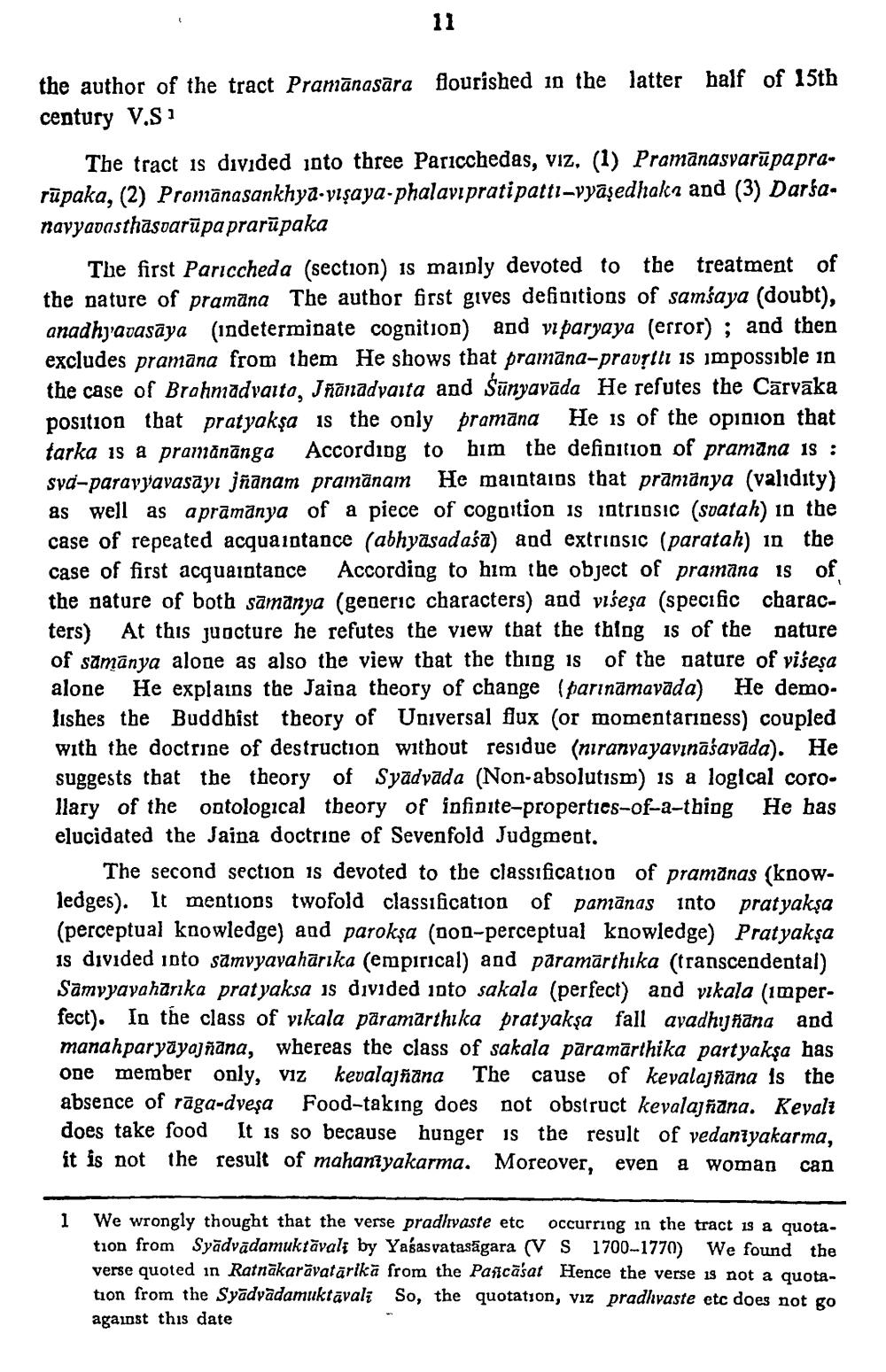________________
11
the author of the tract Pramanasara flourished in the latter half of 15th century V.S1
The tract is divided into three Paricchedas, viz. (1) Pramanasvarūpaprarupaka, (2) Promānasankhya-vışaya-phalavıpratipatti-vyaṣedhaka and (3) Darsanavyavasthasvarupa prarupaka
The first Pariccheda (section) is mainly devoted to the treatment of the nature of pramana The author first gives definitions of samsaya (doubt), anadhyavasaya (indeterminate cognition) and viparyaya (error); and then excludes pramana from them He shows that pramana-pravṛtti is impossible in the case of Brahmadvaito, Jñānādvaita and Sunyavāda He refutes the Cārvāka position that pratyakşa is the only pramana He is of the opinion that tarka is a pramānānga According to him the definition of pramana is : sva-paravyavasayı jñānam pramanam He maintains that pramanya (validity) as well as apramanya of a piece of cognition is intrinsic (svatah) in the case of repeated acquaintance (abhyāsadaśā) and extrinsic (paratah) in the case of first acquaintance According to him the object of pramana is of the nature of both samanya (generic characters) and visesa (specific characters) At this juncture he refutes the view that the thing is of the nature of samanya alone as also the view that the thing is of the nature of višesa alone He explains the Jaina theory of change (parināmavāda) He demolishes the Buddhist theory of Universal flux (or momentariness) coupled with the doctrine of destruction without residue (nıranvayavınāśavāda). He suggests that the theory of Syādvāda (Non-absolutism) is a logical corollary of the ontological theory of infinite-properties-of-a-thing He has elucidated the Jaina doctrine of Sevenfold Judgment.
The second section is devoted to the classification of pramānas (knowledges). It mentions twofold classification of pamanas into pratyakşa (perceptual knowledge) and paroksa (non-perceptual knowledge) Pratyakşa is divided into samvyavaharika (empirical) and paramarthika (transcendental) Samyyavahārika pratyaksa is divided into sakala (perfect) and vikala (imperfect). In the class of vikala päramärthika pratyakşa fall avadhyñana and manahparyāyajñāna, whereas the class of sakala pāramārthika partyakşa has one member only, viz kevalajñāna The cause of kevalajñana is the absence of raga-dveşa Food-taking does not obstruct kevalajñana. Kevalt does take food It is so because hunger is the result of vedantyakarma, it is not the result of mahantyakarma. Moreover, even a woman can
1
We wrongly thought that the verse pradhvaste etc occurring in the tract is a quotation from Syadvādamuktavali by Yasasvatasagara (V S 1700-1770) We found the verse quoted in Ratnakarāvatärikä from the Pancasat Hence the verse is not a quotation from the Syādvādamuktāvali So, the quotation, viz pradhvaste etc does not go against this date




